-
EXECUTIVE SUMMARY
-
Market Overview
-
Key Findings
-
Market Segmentation
-
Competitive Landscape
-
Challenges and Opportunities
-
Future Outlook
-
MARKET INTRODUCTION
-
Definition
-
Scope of the study
- Research Objective
- Assumption
- Limitations
-
RESEARCH METHODOLOGY
-
Overview
-
Data Mining
-
Secondary Research
-
Primary Research
- Primary Interviews and Information Gathering Process
- Breakdown of Primary Respondents
-
Forecasting Model
-
Market Size Estimation
- Bottom-Up Approach
- Top-Down Approach
-
Data Triangulation
-
Validation
-
MARKET DYNAMICS
-
Overview
-
Drivers
-
Restraints
-
Opportunities
-
MARKET FACTOR ANALYSIS
-
Value chain Analysis
-
Porter''s Five Forces Analysis
- Bargaining Power of Suppliers
- Bargaining Power of Buyers
- Threat of New Entrants
- Threat of Substitutes
- Intensity of Rivalry
-
COVID-19 Impact Analysis
- Market Impact Analysis
- Regional Impact
- Opportunity and Threat Analysis
-
ADVANCED BUILDING MATERIALS MARKET, BY MATERIAL TYPE (USD BILLION)
-
Concrete
-
Glass
-
Insulation
-
Metals
-
Wood
-
ADVANCED BUILDING MATERIALS MARKET, BY FUNCTIONALITY (USD BILLION)
-
Structural
-
Thermal
-
Acoustic
-
Waterproofing
-
Fire-Resistant
-
ADVANCED BUILDING MATERIALS MARKET, BY END USE (USD BILLION)
-
Residential
-
Commercial
-
Industrial
-
Infrastructure
-
ADVANCED BUILDING MATERIALS MARKET, BY APPLICATION (USD BILLION)
-
Roofing
-
Flooring
-
Walls
-
Facades
-
Doors and Windows
-
ADVANCED BUILDING MATERIALS MARKET, BY REGIONAL (USD BILLION)
-
North America
- US
- Canada
-
Europe
- Germany
- UK
- France
- Russia
- Italy
- Spain
- Rest of Europe
-
APAC
- China
- India
- Japan
- South Korea
- Malaysia
- Thailand
- Indonesia
- Rest of APAC
-
South America
- Brazil
- Mexico
- Argentina
- Rest of South America
-
MEA
- GCC Countries
- South Africa
- Rest of MEA
-
COMPETITIVE LANDSCAPE
-
Overview
-
Competitive Analysis
-
Market share Analysis
-
Major Growth Strategy in the Advanced Building Materials Market
-
Competitive Benchmarking
-
Leading Players in Terms of Number of Developments in the Advanced Building Materials Market
-
Key developments and growth strategies
- New Product Launch/Service Deployment
- Merger & Acquisitions
- Joint Ventures
-
Major Players Financial Matrix
- Sales and Operating Income
- Major Players R&D Expenditure. 2023
-
COMPANY PROFILES
-
GAF
- Financial Overview
- Products Offered
- Key Developments
- SWOT Analysis
- Key Strategies
-
China National Building Material
- Financial Overview
- Products Offered
- Key Developments
- SWOT Analysis
- Key Strategies
-
Nippon Steel
- Financial Overview
- Products Offered
- Key Developments
- SWOT Analysis
- Key Strategies
-
Kingspan
- Financial Overview
- Products Offered
- Key Developments
- SWOT Analysis
- Key Strategies
-
Avery Dennison
- Financial Overview
- Products Offered
- Key Developments
- SWOT Analysis
- Key Strategies
-
Knauf
- Financial Overview
- Products Offered
- Key Developments
- SWOT Analysis
- Key Strategies
-
DuPont
- Financial Overview
- Products Offered
- Key Developments
- SWOT Analysis
- Key Strategies
-
SaintGobain
- Financial Overview
- Products Offered
- Key Developments
- SWOT Analysis
- Key Strategies
-
Holcim
- Financial Overview
- Products Offered
- Key Developments
- SWOT Analysis
- Key Strategies
-
BASF
- Financial Overview
- Products Offered
- Key Developments
- SWOT Analysis
- Key Strategies
-
Rockwool
- Financial Overview
- Products Offered
- Key Developments
- SWOT Analysis
- Key Strategies
-
Dow
- Financial Overview
- Products Offered
- Key Developments
- SWOT Analysis
- Key Strategies
-
USG Corporation
- Financial Overview
- Products Offered
- Key Developments
- SWOT Analysis
- Key Strategies
-
ArcelorMittal
- Financial Overview
- Products Offered
- Key Developments
- SWOT Analysis
- Key Strategies
-
Sika
- Financial Overview
- Products Offered
- Key Developments
- SWOT Analysis
- Key Strategies
-
APPENDIX
-
References
-
Related Reports
-
LIST OF TABLES
-
LIST OF ASSUMPTIONS
-
NORTH AMERICA ADVANCED BUILDING MATERIALS MARKET SIZE ESTIMATES & FORECAST, BY MATERIAL TYPE, 2019-2032 (USD BILLIONS)
-
NORTH AMERICA ADVANCED BUILDING MATERIALS MARKET SIZE ESTIMATES & FORECAST, BY FUNCTIONALITY, 2019-2032 (USD BILLIONS)
-
NORTH AMERICA ADVANCED BUILDING MATERIALS MARKET SIZE ESTIMATES & FORECAST, BY END USE, 2019-2032 (USD BILLIONS)
-
NORTH AMERICA ADVANCED BUILDING MATERIALS MARKET SIZE ESTIMATES & FORECAST, BY APPLICATION, 2019-2032 (USD BILLIONS)
-
NORTH AMERICA ADVANCED BUILDING MATERIALS MARKET SIZE ESTIMATES & FORECAST, BY REGIONAL, 2019-2032 (USD BILLIONS)
-
US ADVANCED BUILDING MATERIALS MARKET SIZE ESTIMATES & FORECAST, BY MATERIAL TYPE, 2019-2032 (USD BILLIONS)
-
US ADVANCED BUILDING MATERIALS MARKET SIZE ESTIMATES & FORECAST, BY FUNCTIONALITY, 2019-2032 (USD BILLIONS)
-
US ADVANCED BUILDING MATERIALS MARKET SIZE ESTIMATES & FORECAST, BY END USE, 2019-2032 (USD BILLIONS)
-
US ADVANCED BUILDING MATERIALS MARKET SIZE ESTIMATES & FORECAST, BY APPLICATION, 2019-2032 (USD BILLIONS)
-
US ADVANCED BUILDING MATERIALS MARKET SIZE ESTIMATES & FORECAST, BY REGIONAL, 2019-2032 (USD BILLIONS)
-
CANADA ADVANCED BUILDING MATERIALS MARKET SIZE ESTIMATES & FORECAST, BY MATERIAL TYPE, 2019-2032 (USD BILLIONS)
-
CANADA ADVANCED BUILDING MATERIALS MARKET SIZE ESTIMATES & FORECAST, BY FUNCTIONALITY, 2019-2032 (USD BILLIONS)
-
CANADA ADVANCED BUILDING MATERIALS MARKET SIZE ESTIMATES & FORECAST, BY END USE, 2019-2032 (USD BILLIONS)
-
CANADA ADVANCED BUILDING MATERIALS MARKET SIZE ESTIMATES & FORECAST, BY APPLICATION, 2019-2032 (USD BILLIONS)
-
CANADA ADVANCED BUILDING MATERIALS MARKET SIZE ESTIMATES & FORECAST, BY REGIONAL, 2019-2032 (USD BILLIONS)
-
EUROPE ADVANCED BUILDING MATERIALS MARKET SIZE ESTIMATES & FORECAST, BY MATERIAL TYPE, 2019-2032 (USD BILLIONS)
-
EUROPE ADVANCED BUILDING MATERIALS MARKET SIZE ESTIMATES & FORECAST, BY FUNCTIONALITY, 2019-2032 (USD BILLIONS)
-
EUROPE ADVANCED BUILDING MATERIALS MARKET SIZE ESTIMATES & FORECAST, BY END USE, 2019-2032 (USD BILLIONS)
-
EUROPE ADVANCED BUILDING MATERIALS MARKET SIZE ESTIMATES & FORECAST, BY APPLICATION, 2019-2032 (USD BILLIONS)
-
EUROPE ADVANCED BUILDING MATERIALS MARKET SIZE ESTIMATES & FORECAST, BY REGIONAL, 2019-2032 (USD BILLIONS)
-
GERMANY ADVANCED BUILDING MATERIALS MARKET SIZE ESTIMATES & FORECAST, BY MATERIAL TYPE, 2019-2032 (USD BILLIONS)
-
GERMANY ADVANCED BUILDING MATERIALS MARKET SIZE ESTIMATES & FORECAST, BY FUNCTIONALITY, 2019-2032 (USD BILLIONS)
-
GERMANY ADVANCED BUILDING MATERIALS MARKET SIZE ESTIMATES & FORECAST, BY END USE, 2019-2032 (USD BILLIONS)
-
GERMANY ADVANCED BUILDING MATERIALS MARKET SIZE ESTIMATES & FORECAST, BY APPLICATION, 2019-2032 (USD BILLIONS)
-
GERMANY ADVANCED BUILDING MATERIALS MARKET SIZE ESTIMATES & FORECAST, BY REGIONAL, 2019-2032 (USD BILLIONS)
-
UK ADVANCED BUILDING MATERIALS MARKET SIZE ESTIMATES & FORECAST, BY MATERIAL TYPE, 2019-2032 (USD BILLIONS)
-
UK ADVANCED BUILDING MATERIALS MARKET SIZE ESTIMATES & FORECAST, BY FUNCTIONALITY, 2019-2032 (USD BILLIONS)
-
UK ADVANCED BUILDING MATERIALS MARKET SIZE ESTIMATES & FORECAST, BY END USE, 2019-2032 (USD BILLIONS)
-
UK ADVANCED BUILDING MATERIALS MARKET SIZE ESTIMATES & FORECAST, BY APPLICATION, 2019-2032 (USD BILLIONS)
-
UK ADVANCED BUILDING MATERIALS MARKET SIZE ESTIMATES & FORECAST, BY REGIONAL, 2019-2032 (USD BILLIONS)
-
FRANCE ADVANCED BUILDING MATERIALS MARKET SIZE ESTIMATES & FORECAST, BY MATERIAL TYPE, 2019-2032 (USD BILLIONS)
-
FRANCE ADVANCED BUILDING MATERIALS MARKET SIZE ESTIMATES & FORECAST, BY FUNCTIONALITY, 2019-2032 (USD BILLIONS)
-
FRANCE ADVANCED BUILDING MATERIALS MARKET SIZE ESTIMATES & FORECAST, BY END USE, 2019-2032 (USD BILLIONS)
-
FRANCE ADVANCED BUILDING MATERIALS MARKET SIZE ESTIMATES & FORECAST, BY APPLICATION, 2019-2032 (USD BILLIONS)
-
FRANCE ADVANCED BUILDING MATERIALS MARKET SIZE ESTIMATES & FORECAST, BY REGIONAL, 2019-2032 (USD BILLIONS)
-
RUSSIA ADVANCED BUILDING MATERIALS MARKET SIZE ESTIMATES & FORECAST, BY MATERIAL TYPE, 2019-2032 (USD BILLIONS)
-
RUSSIA ADVANCED BUILDING MATERIALS MARKET SIZE ESTIMATES & FORECAST, BY FUNCTIONALITY, 2019-2032 (USD BILLIONS)
-
RUSSIA ADVANCED BUILDING MATERIALS MARKET SIZE ESTIMATES & FORECAST, BY END USE, 2019-2032 (USD BILLIONS)
-
RUSSIA ADVANCED BUILDING MATERIALS MARKET SIZE ESTIMATES & FORECAST, BY APPLICATION, 2019-2032 (USD BILLIONS)
-
RUSSIA ADVANCED BUILDING MATERIALS MARKET SIZE ESTIMATES & FORECAST, BY REGIONAL, 2019-2032 (USD BILLIONS)
-
ITALY ADVANCED BUILDING MATERIALS MARKET SIZE ESTIMATES & FORECAST, BY MATERIAL TYPE, 2019-2032 (USD BILLIONS)
-
ITALY ADVANCED BUILDING MATERIALS MARKET SIZE ESTIMATES & FORECAST, BY FUNCTIONALITY, 2019-2032 (USD BILLIONS)
-
ITALY ADVANCED BUILDING MATERIALS MARKET SIZE ESTIMATES & FORECAST, BY END USE, 2019-2032 (USD BILLIONS)
-
ITALY ADVANCED BUILDING MATERIALS MARKET SIZE ESTIMATES & FORECAST, BY APPLICATION, 2019-2032 (USD BILLIONS)
-
ITALY ADVANCED BUILDING MATERIALS MARKET SIZE ESTIMATES & FORECAST, BY REGIONAL, 2019-2032 (USD BILLIONS)
-
SPAIN ADVANCED BUILDING MATERIALS MARKET SIZE ESTIMATES & FORECAST, BY MATERIAL TYPE, 2019-2032 (USD BILLIONS)
-
SPAIN ADVANCED BUILDING MATERIALS MARKET SIZE ESTIMATES & FORECAST, BY FUNCTIONALITY, 2019-2032 (USD BILLIONS)
-
SPAIN ADVANCED BUILDING MATERIALS MARKET SIZE ESTIMATES & FORECAST, BY END USE, 2019-2032 (USD BILLIONS)
-
SPAIN ADVANCED BUILDING MATERIALS MARKET SIZE ESTIMATES & FORECAST, BY APPLICATION, 2019-2032 (USD BILLIONS)
-
SPAIN ADVANCED BUILDING MATERIALS MARKET SIZE ESTIMATES & FORECAST, BY REGIONAL, 2019-2032 (USD BILLIONS)
-
REST OF EUROPE ADVANCED BUILDING MATERIALS MARKET SIZE ESTIMATES & FORECAST, BY MATERIAL TYPE, 2019-2032 (USD BILLIONS)
-
REST OF EUROPE ADVANCED BUILDING MATERIALS MARKET SIZE ESTIMATES & FORECAST, BY FUNCTIONALITY, 2019-2032 (USD BILLIONS)
-
REST OF EUROPE ADVANCED BUILDING MATERIALS MARKET SIZE ESTIMATES & FORECAST, BY END USE, 2019-2032 (USD BILLIONS)
-
REST OF EUROPE ADVANCED BUILDING MATERIALS MARKET SIZE ESTIMATES & FORECAST, BY APPLICATION, 2019-2032 (USD BILLIONS)
-
REST OF EUROPE ADVANCED BUILDING MATERIALS MARKET SIZE ESTIMATES & FORECAST, BY REGIONAL, 2019-2032 (USD BILLIONS)
-
APAC ADVANCED BUILDING MATERIALS MARKET SIZE ESTIMATES & FORECAST, BY MATERIAL TYPE, 2019-2032 (USD BILLIONS)
-
APAC ADVANCED BUILDING MATERIALS MARKET SIZE ESTIMATES & FORECAST, BY FUNCTIONALITY, 2019-2032 (USD BILLIONS)
-
APAC ADVANCED BUILDING MATERIALS MARKET SIZE ESTIMATES & FORECAST, BY END USE, 2019-2032 (USD BILLIONS)
-
APAC ADVANCED BUILDING MATERIALS MARKET SIZE ESTIMATES & FORECAST, BY APPLICATION, 2019-2032 (USD BILLIONS)
-
APAC ADVANCED BUILDING MATERIALS MARKET SIZE ESTIMATES & FORECAST, BY REGIONAL, 2019-2032 (USD BILLIONS)
-
CHINA ADVANCED BUILDING MATERIALS MARKET SIZE ESTIMATES & FORECAST, BY MATERIAL TYPE, 2019-2032 (USD BILLIONS)
-
CHINA ADVANCED BUILDING MATERIALS MARKET SIZE ESTIMATES & FORECAST, BY FUNCTIONALITY, 2019-2032 (USD BILLIONS)
-
CHINA ADVANCED BUILDING MATERIALS MARKET SIZE ESTIMATES & FORECAST, BY END USE, 2019-2032 (USD BILLIONS)
-
CHINA ADVANCED BUILDING MATERIALS MARKET SIZE ESTIMATES & FORECAST, BY APPLICATION, 2019-2032 (USD BILLIONS)
-
CHINA ADVANCED BUILDING MATERIALS MARKET SIZE ESTIMATES & FORECAST, BY REGIONAL, 2019-2032 (USD BILLIONS)
-
INDIA ADVANCED BUILDING MATERIALS MARKET SIZE ESTIMATES & FORECAST, BY MATERIAL TYPE, 2019-2032 (USD BILLIONS)
-
INDIA ADVANCED BUILDING MATERIALS MARKET SIZE ESTIMATES & FORECAST, BY FUNCTIONALITY, 2019-2032 (USD BILLIONS)
-
INDIA ADVANCED BUILDING MATERIALS MARKET SIZE ESTIMATES & FORECAST, BY END USE, 2019-2032 (USD BILLIONS)
-
INDIA ADVANCED BUILDING MATERIALS MARKET SIZE ESTIMATES & FORECAST, BY APPLICATION, 2019-2032 (USD BILLIONS)
-
INDIA ADVANCED BUILDING MATERIALS MARKET SIZE ESTIMATES & FORECAST, BY REGIONAL, 2019-2032 (USD BILLIONS)
-
JAPAN ADVANCED BUILDING MATERIALS MARKET SIZE ESTIMATES & FORECAST, BY MATERIAL TYPE, 2019-2032 (USD BILLIONS)
-
JAPAN ADVANCED BUILDING MATERIALS MARKET SIZE ESTIMATES & FORECAST, BY FUNCTIONALITY, 2019-2032 (USD BILLIONS)
-
JAPAN ADVANCED BUILDING MATERIALS MARKET SIZE ESTIMATES & FORECAST, BY END USE, 2019-2032 (USD BILLIONS)
-
JAPAN ADVANCED BUILDING MATERIALS MARKET SIZE ESTIMATES & FORECAST, BY APPLICATION, 2019-2032 (USD BILLIONS)
-
JAPAN ADVANCED BUILDING MATERIALS MARKET SIZE ESTIMATES & FORECAST, BY REGIONAL, 2019-2032 (USD BILLIONS)
-
SOUTH KOREA ADVANCED BUILDING MATERIALS MARKET SIZE ESTIMATES & FORECAST, BY MATERIAL TYPE, 2019-2032 (USD BILLIONS)
-
SOUTH KOREA ADVANCED BUILDING MATERIALS MARKET SIZE ESTIMATES & FORECAST, BY FUNCTIONALITY, 2019-2032 (USD BILLIONS)
-
SOUTH KOREA ADVANCED BUILDING MATERIALS MARKET SIZE ESTIMATES & FORECAST, BY END USE, 2019-2032 (USD BILLIONS)
-
SOUTH KOREA ADVANCED BUILDING MATERIALS MARKET SIZE ESTIMATES & FORECAST, BY APPLICATION, 2019-2032 (USD BILLIONS)
-
SOUTH KOREA ADVANCED BUILDING MATERIALS MARKET SIZE ESTIMATES & FORECAST, BY REGIONAL, 2019-2032 (USD BILLIONS)
-
MALAYSIA ADVANCED BUILDING MATERIALS MARKET SIZE ESTIMATES & FORECAST, BY MATERIAL TYPE, 2019-2032 (USD BILLIONS)
-
MALAYSIA ADVANCED BUILDING MATERIALS MARKET SIZE ESTIMATES & FORECAST, BY FUNCTIONALITY, 2019-2032 (USD BILLIONS)
-
MALAYSIA ADVANCED BUILDING MATERIALS MARKET SIZE ESTIMATES & FORECAST, BY END USE, 2019-2032 (USD BILLIONS)
-
MALAYSIA ADVANCED BUILDING MATERIALS MARKET SIZE ESTIMATES & FORECAST, BY APPLICATION, 2019-2032 (USD BILLIONS)
-
MALAYSIA ADVANCED BUILDING MATERIALS MARKET SIZE ESTIMATES & FORECAST, BY REGIONAL, 2019-2032 (USD BILLIONS)
-
THAILAND ADVANCED BUILDING MATERIALS MARKET SIZE ESTIMATES & FORECAST, BY MATERIAL TYPE, 2019-2032 (USD BILLIONS)
-
THAILAND ADVANCED BUILDING MATERIALS MARKET SIZE ESTIMATES & FORECAST, BY FUNCTIONALITY, 2019-2032 (USD BILLIONS)
-
THAILAND ADVANCED BUILDING MATERIALS MARKET SIZE ESTIMATES & FORECAST, BY END USE, 2019-2032 (USD BILLIONS)
-
THAILAND ADVANCED BUILDING MATERIALS MARKET SIZE ESTIMATES & FORECAST, BY APPLICATION, 2019-2032 (USD BILLIONS)
-
THAILAND ADVANCED BUILDING MATERIALS MARKET SIZE ESTIMATES & FORECAST, BY REGIONAL, 2019-2032 (USD BILLIONS)
-
INDONESIA ADVANCED BUILDING MATERIALS MARKET SIZE ESTIMATES & FORECAST, BY MATERIAL TYPE, 2019-2032 (USD BILLIONS)
-
INDONESIA ADVANCED BUILDING MATERIALS MARKET SIZE ESTIMATES & FORECAST, BY FUNCTIONALITY, 2019-2032 (USD BILLIONS)
-
INDONESIA ADVANCED BUILDING MATERIALS MARKET SIZE ESTIMATES & FORECAST, BY END USE, 2019-2032 (USD BILLIONS)
-
INDONESIA ADVANCED BUILDING MATERIALS MARKET SIZE ESTIMATES & FORECAST, BY APPLICATION, 2019-2032 (USD BILLIONS)
-
INDONESIA ADVANCED BUILDING MATERIALS MARKET SIZE ESTIMATES & FORECAST, BY REGIONAL, 2019-2032 (USD BILLIONS)
-
REST OF APAC ADVANCED BUILDING MATERIALS MARKET SIZE ESTIMATES & FORECAST, BY MATERIAL TYPE, 2019-2032 (USD BILLIONS)
-
REST OF APAC ADVANCED BUILDING MATERIALS MARKET SIZE ESTIMATES & FORECAST, BY FUNCTIONALITY, 2019-2032 (USD BILLIONS)
-
REST OF APAC ADVANCED BUILDING MATERIALS MARKET SIZE ESTIMATES & FORECAST, BY END USE, 2019-2032 (USD BILLIONS)
-
REST OF APAC ADVANCED BUILDING MATERIALS MARKET SIZE ESTIMATES & FORECAST, BY APPLICATION, 2019-2032 (USD BILLIONS)
-
REST OF APAC ADVANCED BUILDING MATERIALS MARKET SIZE ESTIMATES & FORECAST, BY REGIONAL, 2019-2032 (USD BILLIONS)
-
SOUTH AMERICA ADVANCED BUILDING MATERIALS MARKET SIZE ESTIMATES & FORECAST, BY MATERIAL TYPE, 2019-2032 (USD BILLIONS)
-
SOUTH AMERICA ADVANCED BUILDING MATERIALS MARKET SIZE ESTIMATES & FORECAST, BY FUNCTIONALITY, 2019-2032 (USD BILLIONS)
-
SOUTH AMERICA ADVANCED BUILDING MATERIALS MARKET SIZE ESTIMATES & FORECAST, BY END USE, 2019-2032 (USD BILLIONS)
-
SOUTH AMERICA ADVANCED BUILDING MATERIALS MARKET SIZE ESTIMATES & FORECAST, BY APPLICATION, 2019-2032 (USD BILLIONS)
-
SOUTH AMERICA ADVANCED BUILDING MATERIALS MARKET SIZE ESTIMATES & FORECAST, BY REGIONAL, 2019-2032 (USD BILLIONS)
-
BRAZIL ADVANCED BUILDING MATERIALS MARKET SIZE ESTIMATES & FORECAST, BY MATERIAL TYPE, 2019-2032 (USD BILLIONS)
-
BRAZIL ADVANCED BUILDING MATERIALS MARKET SIZE ESTIMATES & FORECAST, BY FUNCTIONALITY, 2019-2032 (USD BILLIONS)
-
BRAZIL ADVANCED BUILDING MATERIALS MARKET SIZE ESTIMATES & FORECAST, BY END USE, 2019-2032 (USD BILLIONS)
-
BRAZIL ADVANCED BUILDING MATERIALS MARKET SIZE ESTIMATES & FORECAST, BY APPLICATION, 2019-2032 (USD BILLIONS)
-
BRAZIL ADVANCED BUILDING MATERIALS MARKET SIZE ESTIMATES & FORECAST, BY REGIONAL, 2019-2032 (USD BILLIONS)
-
MEXICO ADVANCED BUILDING MATERIALS MARKET SIZE ESTIMATES & FORECAST, BY MATERIAL TYPE, 2019-2032 (USD BILLIONS)
-
MEXICO ADVANCED BUILDING MATERIALS MARKET SIZE ESTIMATES & FORECAST, BY FUNCTIONALITY, 2019-2032 (USD BILLIONS)
-
MEXICO ADVANCED BUILDING MATERIALS MARKET SIZE ESTIMATES & FORECAST, BY END USE, 2019-2032 (USD BILLIONS)
-
MEXICO ADVANCED BUILDING MATERIALS MARKET SIZE ESTIMATES & FORECAST, BY APPLICATION, 2019-2032 (USD BILLIONS)
-
MEXICO ADVANCED BUILDING MATERIALS MARKET SIZE ESTIMATES & FORECAST, BY REGIONAL, 2019-2032 (USD BILLIONS)
-
ARGENTINA ADVANCED BUILDING MATERIALS MARKET SIZE ESTIMATES & FORECAST, BY MATERIAL TYPE, 2019-2032 (USD BILLIONS)
-
ARGENTINA ADVANCED BUILDING MATERIALS MARKET SIZE ESTIMATES & FORECAST, BY FUNCTIONALITY, 2019-2032 (USD BILLIONS)
-
ARGENTINA ADVANCED BUILDING MATERIALS MARKET SIZE ESTIMATES & FORECAST, BY END USE, 2019-2032 (USD BILLIONS)
-
ARGENTINA ADVANCED BUILDING MATERIALS MARKET SIZE ESTIMATES & FORECAST, BY APPLICATION, 2019-2032 (USD BILLIONS)
-
ARGENTINA ADVANCED BUILDING MATERIALS MARKET SIZE ESTIMATES & FORECAST, BY REGIONAL, 2019-2032 (USD BILLIONS)
-
REST OF SOUTH AMERICA ADVANCED BUILDING MATERIALS MARKET SIZE ESTIMATES & FORECAST, BY MATERIAL TYPE, 2019-2032 (USD BILLIONS)
-
REST OF SOUTH AMERICA ADVANCED BUILDING MATERIALS MARKET SIZE ESTIMATES & FORECAST, BY FUNCTIONALITY, 2019-2032 (USD BILLIONS)
-
REST OF SOUTH AMERICA ADVANCED BUILDING MATERIALS MARKET SIZE ESTIMATES & FORECAST, BY END USE, 2019-2032 (USD BILLIONS)
-
REST OF SOUTH AMERICA ADVANCED BUILDING MATERIALS MARKET SIZE ESTIMATES & FORECAST, BY APPLICATION, 2019-2032 (USD BILLIONS)
-
REST OF SOUTH AMERICA ADVANCED BUILDING MATERIALS MARKET SIZE ESTIMATES & FORECAST, BY REGIONAL, 2019-2032 (USD BILLIONS)
-
MEA ADVANCED BUILDING MATERIALS MARKET SIZE ESTIMATES & FORECAST, BY MATERIAL TYPE, 2019-2032 (USD BILLIONS)
-
MEA ADVANCED BUILDING MATERIALS MARKET SIZE ESTIMATES & FORECAST, BY FUNCTIONALITY, 2019-2032 (USD BILLIONS)
-
MEA ADVANCED BUILDING MATERIALS MARKET SIZE ESTIMATES & FORECAST, BY END USE, 2019-2032 (USD BILLIONS)
-
MEA ADVANCED BUILDING MATERIALS MARKET SIZE ESTIMATES & FORECAST, BY APPLICATION, 2019-2032 (USD BILLIONS)
-
MEA ADVANCED BUILDING MATERIALS MARKET SIZE ESTIMATES & FORECAST, BY REGIONAL, 2019-2032 (USD BILLIONS)
-
GCC COUNTRIES ADVANCED BUILDING MATERIALS MARKET SIZE ESTIMATES & FORECAST, BY MATERIAL TYPE, 2019-2032 (USD BILLIONS)
-
GCC COUNTRIES ADVANCED BUILDING MATERIALS MARKET SIZE ESTIMATES & FORECAST, BY FUNCTIONALITY, 2019-2032 (USD BILLIONS)
-
GCC COUNTRIES ADVANCED BUILDING MATERIALS MARKET SIZE ESTIMATES & FORECAST, BY END USE, 2019-2032 (USD BILLIONS)
-
GCC COUNTRIES ADVANCED BUILDING MATERIALS MARKET SIZE ESTIMATES & FORECAST, BY APPLICATION, 2019-2032 (USD BILLIONS)
-
GCC COUNTRIES ADVANCED BUILDING MATERIALS MARKET SIZE ESTIMATES & FORECAST, BY REGIONAL, 2019-2032 (USD BILLIONS)
-
SOUTH AFRICA ADVANCED BUILDING MATERIALS MARKET SIZE ESTIMATES & FORECAST, BY MATERIAL TYPE, 2019-2032 (USD BILLIONS)
-
SOUTH AFRICA ADVANCED BUILDING MATERIALS MARKET SIZE ESTIMATES & FORECAST, BY FUNCTIONALITY, 2019-2032 (USD BILLIONS)
-
SOUTH AFRICA ADVANCED BUILDING MATERIALS MARKET SIZE ESTIMATES & FORECAST, BY END USE, 2019-2032 (USD BILLIONS)
-
SOUTH AFRICA ADVANCED BUILDING MATERIALS MARKET SIZE ESTIMATES & FORECAST, BY APPLICATION, 2019-2032 (USD BILLIONS)
-
SOUTH AFRICA ADVANCED BUILDING MATERIALS MARKET SIZE ESTIMATES & FORECAST, BY REGIONAL, 2019-2032 (USD BILLIONS)
-
REST OF MEA ADVANCED BUILDING MATERIALS MARKET SIZE ESTIMATES & FORECAST, BY MATERIAL TYPE, 2019-2032 (USD BILLIONS)
-
REST OF MEA ADVANCED BUILDING MATERIALS MARKET SIZE ESTIMATES & FORECAST, BY FUNCTIONALITY, 2019-2032 (USD BILLIONS)
-
REST OF MEA ADVANCED BUILDING MATERIALS MARKET SIZE ESTIMATES & FORECAST, BY END USE, 2019-2032 (USD BILLIONS)
-
REST OF MEA ADVANCED BUILDING MATERIALS MARKET SIZE ESTIMATES & FORECAST, BY APPLICATION, 2019-2032 (USD BILLIONS)
-
REST OF MEA ADVANCED BUILDING MATERIALS MARKET SIZE ESTIMATES & FORECAST, BY REGIONAL, 2019-2032 (USD BILLIONS)
-
PRODUCT LAUNCH/PRODUCT DEVELOPMENT/APPROVAL
-
ACQUISITION/PARTNERSHIP
-
LIST OF FIGURES
-
MARKET SYNOPSIS
-
NORTH AMERICA ADVANCED BUILDING MATERIALS MARKET ANALYSIS
-
US ADVANCED BUILDING MATERIALS MARKET ANALYSIS BY MATERIAL TYPE
-
US ADVANCED BUILDING MATERIALS MARKET ANALYSIS BY FUNCTIONALITY
-
US ADVANCED BUILDING MATERIALS MARKET ANALYSIS BY END USE
-
US ADVANCED BUILDING MATERIALS MARKET ANALYSIS BY APPLICATION
-
US ADVANCED BUILDING MATERIALS MARKET ANALYSIS BY REGIONAL
-
CANADA ADVANCED BUILDING MATERIALS MARKET ANALYSIS BY MATERIAL TYPE
-
CANADA ADVANCED BUILDING MATERIALS MARKET ANALYSIS BY FUNCTIONALITY
-
CANADA ADVANCED BUILDING MATERIALS MARKET ANALYSIS BY END USE
-
CANADA ADVANCED BUILDING MATERIALS MARKET ANALYSIS BY APPLICATION
-
CANADA ADVANCED BUILDING MATERIALS MARKET ANALYSIS BY REGIONAL
-
EUROPE ADVANCED BUILDING MATERIALS MARKET ANALYSIS
-
GERMANY ADVANCED BUILDING MATERIALS MARKET ANALYSIS BY MATERIAL TYPE
-
GERMANY ADVANCED BUILDING MATERIALS MARKET ANALYSIS BY FUNCTIONALITY
-
GERMANY ADVANCED BUILDING MATERIALS MARKET ANALYSIS BY END USE
-
GERMANY ADVANCED BUILDING MATERIALS MARKET ANALYSIS BY APPLICATION
-
GERMANY ADVANCED BUILDING MATERIALS MARKET ANALYSIS BY REGIONAL
-
UK ADVANCED BUILDING MATERIALS MARKET ANALYSIS BY MATERIAL TYPE
-
UK ADVANCED BUILDING MATERIALS MARKET ANALYSIS BY FUNCTIONALITY
-
UK ADVANCED BUILDING MATERIALS MARKET ANALYSIS BY END USE
-
UK ADVANCED BUILDING MATERIALS MARKET ANALYSIS BY APPLICATION
-
UK ADVANCED BUILDING MATERIALS MARKET ANALYSIS BY REGIONAL
-
FRANCE ADVANCED BUILDING MATERIALS MARKET ANALYSIS BY MATERIAL TYPE
-
FRANCE ADVANCED BUILDING MATERIALS MARKET ANALYSIS BY FUNCTIONALITY
-
FRANCE ADVANCED BUILDING MATERIALS MARKET ANALYSIS BY END USE
-
FRANCE ADVANCED BUILDING MATERIALS MARKET ANALYSIS BY APPLICATION
-
FRANCE ADVANCED BUILDING MATERIALS MARKET ANALYSIS BY REGIONAL
-
RUSSIA ADVANCED BUILDING MATERIALS MARKET ANALYSIS BY MATERIAL TYPE
-
RUSSIA ADVANCED BUILDING MATERIALS MARKET ANALYSIS BY FUNCTIONALITY
-
RUSSIA ADVANCED BUILDING MATERIALS MARKET ANALYSIS BY END USE
-
RUSSIA ADVANCED BUILDING MATERIALS MARKET ANALYSIS BY APPLICATION
-
RUSSIA ADVANCED BUILDING MATERIALS MARKET ANALYSIS BY REGIONAL
-
ITALY ADVANCED BUILDING MATERIALS MARKET ANALYSIS BY MATERIAL TYPE
-
ITALY ADVANCED BUILDING MATERIALS MARKET ANALYSIS BY FUNCTIONALITY
-
ITALY ADVANCED BUILDING MATERIALS MARKET ANALYSIS BY END USE
-
ITALY ADVANCED BUILDING MATERIALS MARKET ANALYSIS BY APPLICATION
-
ITALY ADVANCED BUILDING MATERIALS MARKET ANALYSIS BY REGIONAL
-
SPAIN ADVANCED BUILDING MATERIALS MARKET ANALYSIS BY MATERIAL TYPE
-
SPAIN ADVANCED BUILDING MATERIALS MARKET ANALYSIS BY FUNCTIONALITY
-
SPAIN ADVANCED BUILDING MATERIALS MARKET ANALYSIS BY END USE
-
SPAIN ADVANCED BUILDING MATERIALS MARKET ANALYSIS BY APPLICATION
-
SPAIN ADVANCED BUILDING MATERIALS MARKET ANALYSIS BY REGIONAL
-
REST OF EUROPE ADVANCED BUILDING MATERIALS MARKET ANALYSIS BY MATERIAL TYPE
-
REST OF EUROPE ADVANCED BUILDING MATERIALS MARKET ANALYSIS BY FUNCTIONALITY
-
REST OF EUROPE ADVANCED BUILDING MATERIALS MARKET ANALYSIS BY END USE
-
REST OF EUROPE ADVANCED BUILDING MATERIALS MARKET ANALYSIS BY APPLICATION
-
REST OF EUROPE ADVANCED BUILDING MATERIALS MARKET ANALYSIS BY REGIONAL
-
APAC ADVANCED BUILDING MATERIALS MARKET ANALYSIS
-
CHINA ADVANCED BUILDING MATERIALS MARKET ANALYSIS BY MATERIAL TYPE
-
CHINA ADVANCED BUILDING MATERIALS MARKET ANALYSIS BY FUNCTIONALITY
-
CHINA ADVANCED BUILDING MATERIALS MARKET ANALYSIS BY END USE
-
CHINA ADVANCED BUILDING MATERIALS MARKET ANALYSIS BY APPLICATION
-
CHINA ADVANCED BUILDING MATERIALS MARKET ANALYSIS BY REGIONAL
-
INDIA ADVANCED BUILDING MATERIALS MARKET ANALYSIS BY MATERIAL TYPE
-
INDIA ADVANCED BUILDING MATERIALS MARKET ANALYSIS BY FUNCTIONALITY
-
INDIA ADVANCED BUILDING MATERIALS MARKET ANALYSIS BY END USE
-
INDIA ADVANCED BUILDING MATERIALS MARKET ANALYSIS BY APPLICATION
-
INDIA ADVANCED BUILDING MATERIALS MARKET ANALYSIS BY REGIONAL
-
JAPAN ADVANCED BUILDING MATERIALS MARKET ANALYSIS BY MATERIAL TYPE
-
JAPAN ADVANCED BUILDING MATERIALS MARKET ANALYSIS BY FUNCTIONALITY
-
JAPAN ADVANCED BUILDING MATERIALS MARKET ANALYSIS BY END USE
-
JAPAN ADVANCED BUILDING MATERIALS MARKET ANALYSIS BY APPLICATION
-
JAPAN ADVANCED BUILDING MATERIALS MARKET ANALYSIS BY REGIONAL
-
SOUTH KOREA ADVANCED BUILDING MATERIALS MARKET ANALYSIS BY MATERIAL TYPE
-
SOUTH KOREA ADVANCED BUILDING MATERIALS MARKET ANALYSIS BY FUNCTIONALITY
-
SOUTH KOREA ADVANCED BUILDING MATERIALS MARKET ANALYSIS BY END USE
-
SOUTH KOREA ADVANCED BUILDING MATERIALS MARKET ANALYSIS BY APPLICATION
-
SOUTH KOREA ADVANCED BUILDING MATERIALS MARKET ANALYSIS BY REGIONAL
-
MALAYSIA ADVANCED BUILDING MATERIALS MARKET ANALYSIS BY MATERIAL TYPE
-
MALAYSIA ADVANCED BUILDING MATERIALS MARKET ANALYSIS BY FUNCTIONALITY
-
MALAYSIA ADVANCED BUILDING MATERIALS MARKET ANALYSIS BY END USE
-
MALAYSIA ADVANCED BUILDING MATERIALS MARKET ANALYSIS BY APPLICATION
-
MALAYSIA ADVANCED BUILDING MATERIALS MARKET ANALYSIS BY REGIONAL
-
THAILAND ADVANCED BUILDING MATERIALS MARKET ANALYSIS BY MATERIAL TYPE
-
THAILAND ADVANCED BUILDING MATERIALS MARKET ANALYSIS BY FUNCTIONALITY
-
THAILAND ADVANCED BUILDING MATERIALS MARKET ANALYSIS BY END USE
-
THAILAND ADVANCED BUILDING MATERIALS MARKET ANALYSIS BY APPLICATION
-
THAILAND ADVANCED BUILDING MATERIALS MARKET ANALYSIS BY REGIONAL
-
INDONESIA ADVANCED BUILDING MATERIALS MARKET ANALYSIS BY MATERIAL TYPE
-
INDONESIA ADVANCED BUILDING MATERIALS MARKET ANALYSIS BY FUNCTIONALITY
-
INDONESIA ADVANCED BUILDING MATERIALS MARKET ANALYSIS BY END USE
-
INDONESIA ADVANCED BUILDING MATERIALS MARKET ANALYSIS BY APPLICATION
-
INDONESIA ADVANCED BUILDING MATERIALS MARKET ANALYSIS BY REGIONAL
-
REST OF APAC ADVANCED BUILDING MATERIALS MARKET ANALYSIS BY MATERIAL TYPE
-
REST OF APAC ADVANCED BUILDING MATERIALS MARKET ANALYSIS BY FUNCTIONALITY
-
REST OF APAC ADVANCED BUILDING MATERIALS MARKET ANALYSIS BY END USE
-
REST OF APAC ADVANCED BUILDING MATERIALS MARKET ANALYSIS BY APPLICATION
-
REST OF APAC ADVANCED BUILDING MATERIALS MARKET ANALYSIS BY REGIONAL
-
SOUTH AMERICA ADVANCED BUILDING MATERIALS MARKET ANALYSIS
-
BRAZIL ADVANCED BUILDING MATERIALS MARKET ANALYSIS BY MATERIAL TYPE
-
BRAZIL ADVANCED BUILDING MATERIALS MARKET ANALYSIS BY FUNCTIONALITY
-
BRAZIL ADVANCED BUILDING MATERIALS MARKET ANALYSIS BY END USE
-
BRAZIL ADVANCED BUILDING MATERIALS MARKET ANALYSIS BY APPLICATION
-
BRAZIL ADVANCED BUILDING MATERIALS MARKET ANALYSIS BY REGIONAL
-
MEXICO ADVANCED BUILDING MATERIALS MARKET ANALYSIS BY MATERIAL TYPE
-
MEXICO ADVANCED BUILDING MATERIALS MARKET ANALYSIS BY FUNCTIONALITY
-
MEXICO ADVANCED BUILDING MATERIALS MARKET ANALYSIS BY END USE
-
MEXICO ADVANCED BUILDING MATERIALS MARKET ANALYSIS BY APPLICATION
-
MEXICO ADVANCED BUILDING MATERIALS MARKET ANALYSIS BY REGIONAL
-
ARGENTINA ADVANCED BUILDING MATERIALS MARKET ANALYSIS BY MATERIAL TYPE
-
ARGENTINA ADVANCED BUILDING MATERIALS MARKET ANALYSIS BY FUNCTIONALITY
-
ARGENTINA ADVANCED BUILDING MATERIALS MARKET ANALYSIS BY END USE
-
ARGENTINA ADVANCED BUILDING MATERIALS MARKET ANALYSIS BY APPLICATION
-
ARGENTINA ADVANCED BUILDING MATERIALS MARKET ANALYSIS BY REGIONAL
-
REST OF SOUTH AMERICA ADVANCED BUILDING MATERIALS MARKET ANALYSIS BY MATERIAL TYPE
-
REST OF SOUTH AMERICA ADVANCED BUILDING MATERIALS MARKET ANALYSIS BY FUNCTIONALITY
-
REST OF SOUTH AMERICA ADVANCED BUILDING MATERIALS MARKET ANALYSIS BY END USE
-
REST OF SOUTH AMERICA ADVANCED BUILDING MATERIALS MARKET ANALYSIS BY APPLICATION
-
REST OF SOUTH AMERICA ADVANCED BUILDING MATERIALS MARKET ANALYSIS BY REGIONAL
-
MEA ADVANCED BUILDING MATERIALS MARKET ANALYSIS
-
GCC COUNTRIES ADVANCED BUILDING MATERIALS MARKET ANALYSIS BY MATERIAL TYPE
-
GCC COUNTRIES ADVANCED BUILDING MATERIALS MARKET ANALYSIS BY FUNCTIONALITY
-
GCC COUNTRIES ADVANCED BUILDING MATERIALS MARKET ANALYSIS BY END USE
-
GCC COUNTRIES ADVANCED BUILDING MATERIALS MARKET ANALYSIS BY APPLICATION
-
GCC COUNTRIES ADVANCED BUILDING MATERIALS MARKET ANALYSIS BY REGIONAL
-
SOUTH AFRICA ADVANCED BUILDING MATERIALS MARKET ANALYSIS BY MATERIAL TYPE
-
SOUTH AFRICA ADVANCED BUILDING MATERIALS MARKET ANALYSIS BY FUNCTIONALITY
-
SOUTH AFRICA ADVANCED BUILDING MATERIALS MARKET ANALYSIS BY END USE
-
SOUTH AFRICA ADVANCED BUILDING MATERIALS MARKET ANALYSIS BY APPLICATION
-
SOUTH AFRICA ADVANCED BUILDING MATERIALS MARKET ANALYSIS BY REGIONAL
-
REST OF MEA ADVANCED BUILDING MATERIALS MARKET ANALYSIS BY MATERIAL TYPE
-
REST OF MEA ADVANCED BUILDING MATERIALS MARKET ANALYSIS BY FUNCTIONALITY
-
REST OF MEA ADVANCED BUILDING MATERIALS MARKET ANALYSIS BY END USE
-
REST OF MEA ADVANCED BUILDING MATERIALS MARKET ANALYSIS BY APPLICATION
-
REST OF MEA ADVANCED BUILDING MATERIALS MARKET ANALYSIS BY REGIONAL
-
KEY BUYING CRITERIA OF ADVANCED BUILDING MATERIALS MARKET
-
RESEARCH PROCESS OF MRFR
-
DRO ANALYSIS OF ADVANCED BUILDING MATERIALS MARKET
-
DRIVERS IMPACT ANALYSIS: ADVANCED BUILDING MATERIALS MARKET
-
RESTRAINTS IMPACT ANALYSIS: ADVANCED BUILDING MATERIALS MARKET
-
SUPPLY / VALUE CHAIN: ADVANCED BUILDING MATERIALS MARKET
-
ADVANCED BUILDING MATERIALS MARKET, BY MATERIAL TYPE, 2024 (% SHARE)
-
ADVANCED BUILDING MATERIALS MARKET, BY MATERIAL TYPE, 2019 TO 2032 (USD Billions)
-
ADVANCED BUILDING MATERIALS MARKET, BY FUNCTIONALITY, 2024 (% SHARE)
-
ADVANCED BUILDING MATERIALS MARKET, BY FUNCTIONALITY, 2019 TO 2032 (USD Billions)
-
ADVANCED BUILDING MATERIALS MARKET, BY END USE, 2024 (% SHARE)
-
ADVANCED BUILDING MATERIALS MARKET, BY END USE, 2019 TO 2032 (USD Billions)
-
ADVANCED BUILDING MATERIALS MARKET, BY APPLICATION, 2024 (% SHARE)
-
ADVANCED BUILDING MATERIALS MARKET, BY APPLICATION, 2019 TO 2032 (USD Billions)
-
ADVANCED BUILDING MATERIALS MARKET, BY REGIONAL, 2024 (% SHARE)
-
ADVANCED BUILDING MATERIALS MARKET, BY REGIONAL, 2019 TO 2032 (USD Billions)
-
BENCHMARKING OF MAJOR COMPETITORS
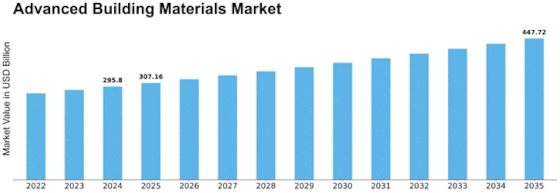

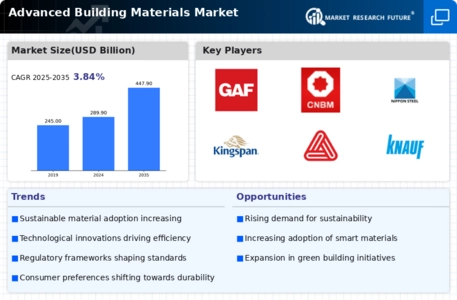

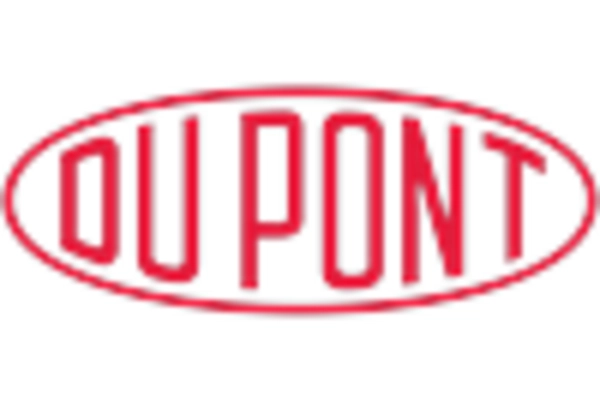

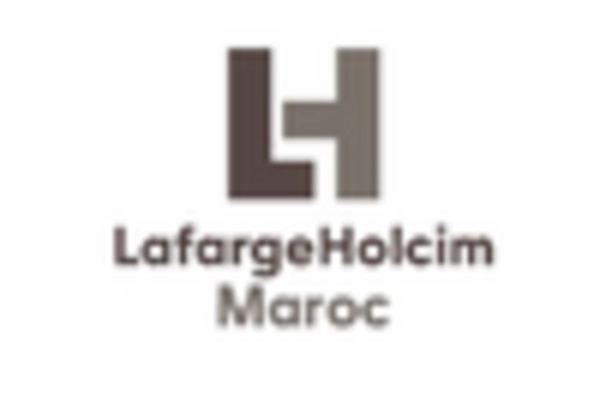

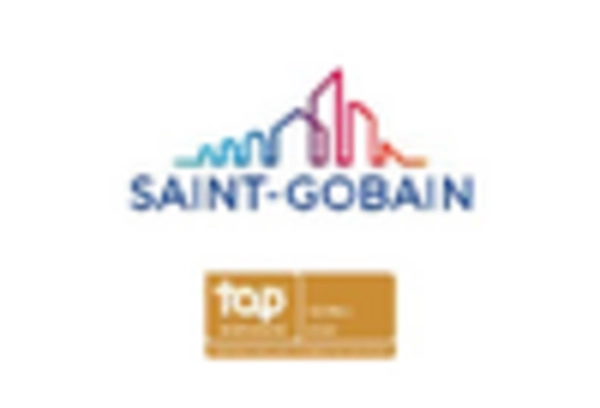

Leave a Comment